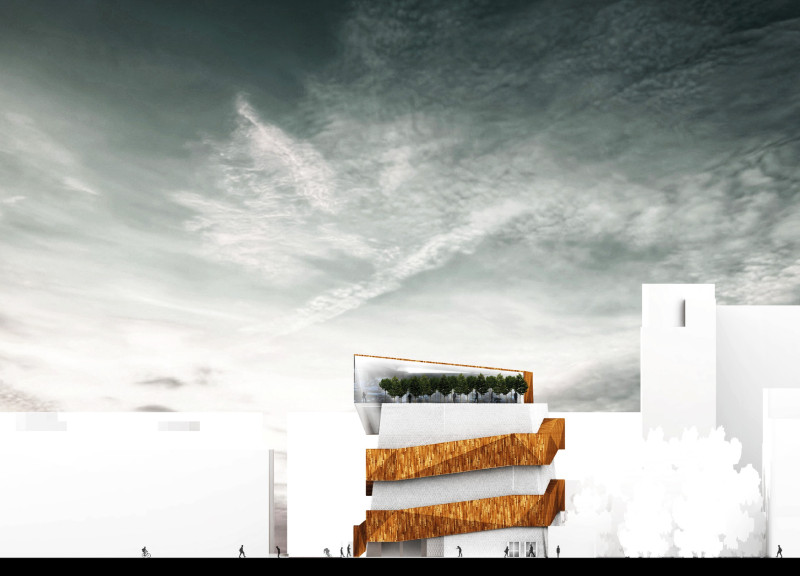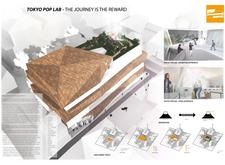5 key facts about this project
**Overview**
The Tokyo Pop Lab is a contemporary architectural intervention located in the heart of Tokyo, Japan. This project seeks to enhance cultural engagement through innovative design within an urban environment, drawing inspiration from Mount Fuji to reflect the significance of Japanese heritage and tradition. The design emphasizes the idea that the experience of inhabiting the space is as valuable as its physical presence, encouraging visitors to explore layers of cultural expression and collaborative creativity.
**Spatial Interaction and User Engagement**
The design strategy prioritizes user interaction and spatial fluidity, carefully considering how individuals will navigate the space and engage with its amenities. Multi-tiered rooflines evoke the profile of Mount Fuji, establishing a visual connection to the natural landscape while modulating the building's scale within its dense urban context. The inclusion of open atrium spaces promotes social interaction and allows natural light to permeate, enhancing the overall user experience and facilitating movement throughout the facility.
**Materiality and Sustainability**
The material selection for the Tokyo Pop Lab reflects a juxtaposition of traditional Japanese elements with modern methodologies. Wood is widely used for roofing, contributing warmth and an organic aesthetic. Aluminum frames provide structural integrity and energy efficiency, while glass facades facilitate transparency, merging indoor and outdoor environments. Concrete serves as a robust foundation designed to withstand seismic activity, a critical consideration given Tokyo's geographical context.
The project incorporates green roofs and terraces, promoting biodiversity and creating recreational spaces. Additionally, it features cultural hybridization, integrating aesthetic elements from various Asian cultures to encourage a diverse cultural dialogue. This approach supports sustainability goals and enhances community engagement through shared spaces for learning and interaction.




















































